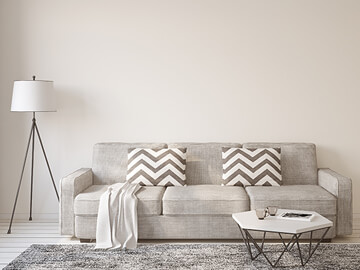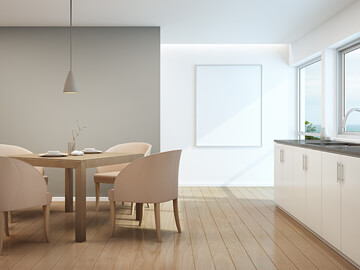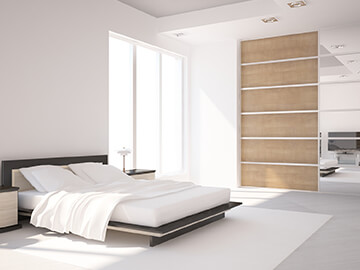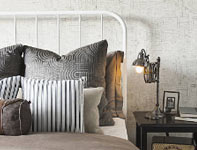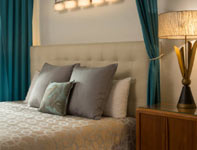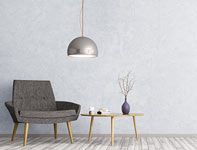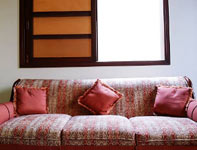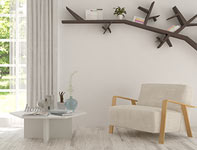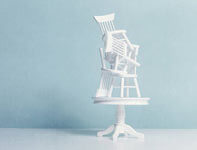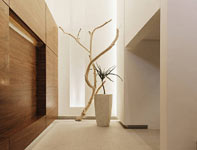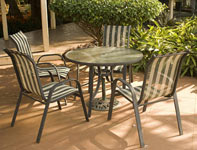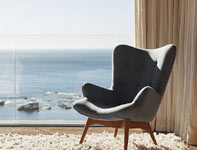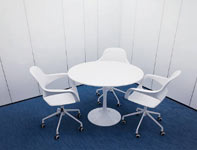Home
FEATURED PRODUCTS
-
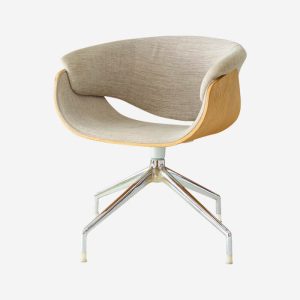
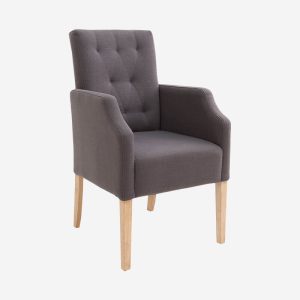 Select optionsQuick View
Select optionsQuick View -
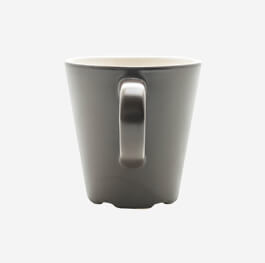
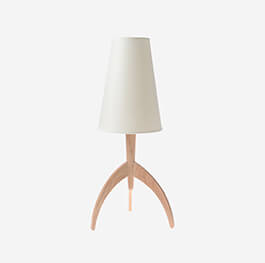 Select optionsQuick View
Select optionsQuick View -
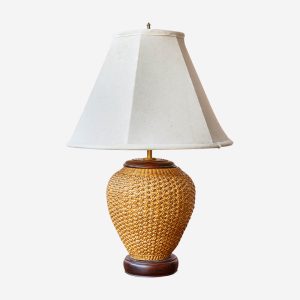
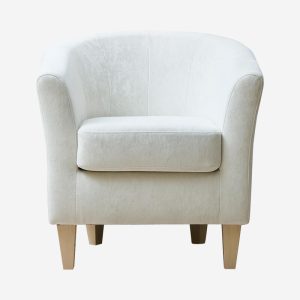 Select optionsQuick View
Select optionsQuick View -
-23%
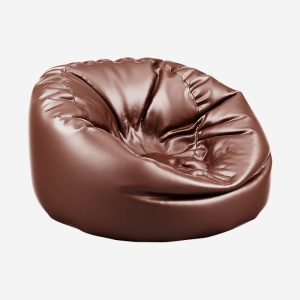 Select optionsQuick View
Select optionsQuick View -
 Add to cartQuick View
Add to cartQuick View -
-15%
 Add to cartQuick View
Add to cartQuick View -
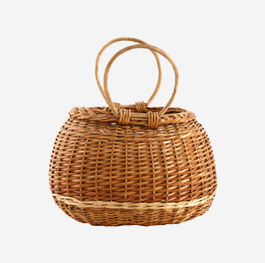 Add to cartQuick View
Add to cartQuick View -
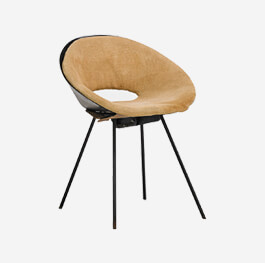 Add to cartQuick View
Add to cartQuick View
The Modern Appeal of Metal Kitchen Cabinets
Durable, stylish metal kitchen cabinets for modern homes. Enhance your kitchen with high-quality steel cabinets that blend aesthetics and functionality.
Embracing the Durability of Metal Cabinets
The lure of metal for kitchen cabinets lies not only in its aesthetic value. As a material, metal’s resilience is unmatched, providing a lasting solution against wear and tear. Its ability to withstand high temperatures, resist moisture, and deter pests presents certain benefits that make metal cabinets a sensible choice.
Transcending Design with Metal Kitchen Cabinets
Moving beyond functionality, metal kitchen cabinets embody a timeless elegance that transcends trends. Their sleek appearance adds a modern, industrial flair to any kitchen. Available in various finishes such as stainless steel, copper, or painted options, these cabinets can adapt to any design preference.
The Eco-Friendliness Angle of Metal Cabinets
Embracing metal kitchen cabinets means choosing an eco-friendly option. Metal is recyclable, making these cabinets a sustainable choice in a world increasingly conscious about environmental impact.
Investing in Metal Kitchen Cabinets
While initial costs can be higher than other materials, the longevity of metal kitchen cabinets justifies the investment. Their robust construction and almost negligible maintenance cost make them an economical option in the long run.
Metal Kitchen Cabinets: A Modern and Durable Option
Metal kitchen cabinets are becoming an increasingly popular choice for modern kitchen designs. Made from steel, aluminum, or stainless steel, metal cabinets offer a sleek, contemporary aesthetic while also providing exceptional durability and easy maintenance. In this article, we’ll explore the benefits of installing metal kitchen cabinets and provide tips on how to incorporate them into your kitchen design.
Benefits of Metal Kitchen Cabinets
There are many advantages to choosing metal over traditional wood cabinets:
Contemporary Styling
The streamlined look of metal cabinets complements modern, industrial, and minimalist kitchen designs. Their smooth, uniform surfaces create a polished, upscale appearance. Metal finishes like brushed nickel, oil-rubbed bronze, and matte black offer understated elegance.
Strength and Durability
Metal is much stronger than wood and can withstand everyday wear and tear. Metal cabinet doors and frames won’t warp or crack under pressure. Stainless steel provides dent, scratch, and corrosion resistance. Most metal cabinets are made with 16-, 18- or 20-gauge steel for optimal sturdiness.
Stain Resistance
Metal surfaces deter stains from grease, oil, water, and other cooking splatters. Simply wipe down with soap and water to clean. No need for special cabinet cleaners or polishes.
Low Maintenance
Unlike wood cabinets, metal cabinets don’t require regular sealing, painting, or refinishing to keep looking pristine. An occasional wipedown is all that’s needed to retain their shine and luster over the years.
Heat and Fire Resistance
Metal cabinets hold up well to heat and open flames, an important safety feature for kitchens. Most metals have high melting points, making metal cabinets unlikely to burn or melt.
Customization Options
Metal cabinets come in a wide range of styles, finishes, and configurations to suit any kitchen layout. Mix and match metal colors and hardware for a unique look. Integrated handles maintain a sleek silhouette.
Affordability
Basic metal stock cabinets cost 20%-50% less than solid wood cabinetry. While high-end stainless steel cabinets have premium price tags, standard steel and aluminum cabinets provide an affordable alternative to wood that still delivers style, performance, and long-term value.
Popular Metal Kitchen Cabinet Options
Stainless Steel
Known for its sterling luster and durability, stainless steel brings a modern, industrial look to kitchens. Brushed and satin finishes limit the visibility of fingerprints and smudges. Stainless resists stains, rust, odor absorption and heat. It’s easy to clean and maintain. 304 and 430 grade stainless steels offer the most corrosion resistance.
Aluminum
Lightweight yet strong aluminum delivers sleek elegance with metallic finishes like silver, bronze and pewter. Anodized aluminum finishes add texture and depth. Matte options hide fingerprints. Some aluminum can dent if subjected to heavy impact. Alloy grades 6063 and 6463 provide optimal corrosion resistance.
Steel
From basic painted steel to sophisticated stainless-look finishes, steel cabinetry provides classic industrial appeal on a budget. Cold rolled steel offers good durability. Hot rolled steel has rougher surfaces. Choose galvanized steel for rust resistance. Go with thicker gauge steel (18+ gauge) for sturdiness.
Metal Laminates
High-pressure metal laminates or HPML fuses metal skins to a wood or composite wood substrate, providing metal’s aesthetic at a lower cost. Brushed copper, stainless, bronze and tin laminates mimic higher-end metals. The substrate core ensures structural integrity.
Design Ideas for Metal Kitchen Cabinets
Integrating metal cabinets into your kitchen design comes down to choosing complementary materials and finishes that align with your intended style.
Mix Metals
Blending metal cabinet colors, like silver with bronze or black stainless steel with regular stainless, adds bold personality. Just be sure finishes have similar gloss levels so surfaces don’t clash.
Contrast with Warm Wood
The natural glow of wood countertops helps soften and balance metal’s sleek edges. Wood also introduces needed texture. Oak, walnut and bamboo work especially well with metal’s cool tones.
Pair with Stone
Durable natural stone countertops like quartz, granite and marble make an elegant counterpoint to metal’s industrial edge. Their veining and patterning creates visual interest.
Complement with Color
Vivid paint colors, like cobalt blue, sage green or tomato red, offset monochromatic metal cabinets for retro-inspired flair. Glossy paints reflect light, accentuating metal’s sheen.
Create Consistency
For a seamless look, use metal cabinets, hardware, appliances, backsplashes, lighting and sinks. Matching metals and finishes prevents disharmony. Consider metal open shelving above cabinets.
Contrast Texture
Rough wood or concrete floors and reclaimed wood beams instill cozy warmth against sleek metal cabinets. Brick, tile or stone backsplashes add tactile appeal.
Highlight Craftsmanship
Exposed metal framework, visible welding lines and custom metal accents, like handrails or legs, showcase artisanal quality.
Installation and Maintenance Tips
Follow these best practices for installing and caring for metal kitchen cabinets:
-
- Hire professional installers experienced with metal cabinets since they require precise alignment and secure mounting.
-
- Use corrosion-resistant fasteners suitable for metal. Self-tapping screws provide the strongest hold.
-
- Make sure underlying walls are moisture-free. Apply waterproof sealant to wood subfloors.
-
- Follow manufacturer instructions for installing any required wall mounting rails and metal corner pieces.
-
- During cleaning, use microfiber cloths to avoid scratching metal finishes.
-
- Use all-metal polishes minimally. Frequent polishing can strip away protective finishes.
-
- For stainless steel, clean along the grain line. Use a stainless steel cleaner or mild soap and water.
-
- Avoid harsh cleansers, scouring pads, steel wool or abrasive scrubbers on metal finishes.
-
- Immediately dry any water, liquids or condensation to prevent corrosion and mineral deposits.
-
- If any metal parts become dented, use professional services to repair and refinish.
Installing high-quality metal kitchen cabinets, caring for them properly, and integrating them seamlessly into your kitchen design results in a durable, eye-catching and long-lasting modern aesthetic. With the right combination of materials and smart design choices, metal cabinets make a distinctive and functional statement.
Styles of Metal Kitchen Cabinets
Metal kitchen cabinets encompass a wide array of styles, from sleek European designs to rustic industrial to minimalist contemporary. The range of metal colors, finishes, hardware and configurations allows creating metal cabinetry to suit any kitchen’s form and function.
European Style
Streamlined in silhouette with handleless doors, European style metal cabinets express understated sophistication. Stainless steel pairs nicely with engineered stone counters for crisp linear surfaces. Soft closing hinges and doors provide refined luxury.
Industrial Style
Unfinished, raw metals like blackened steel and metallic aluminum convey rugged warehouse chic. Rivet accents and visible welds reinforce industrial appeal. Open shelves continue the aesthetic.
Modern Style
Clean, simple lines define modern metal cabinets. Glossy lacquered finishes in bold hues or sleek stainless evoke contemporary edge. Recessed pulls maintain sheer facades. Built-in LEDs illuminate interiors.
Urban Loft Style
Mixing metals, like stainless steel bases with natural iron uppers separated by a simple shelf, imparts urban loft panache. Exposed pipes and conduits underline vintage architectural character.
Retro Style
For retro diner or soda fountain flair, chrome-plated steel evokes 1950s nostalgia. Curved corners and boomerang cut outs continue the theme. Formica counters complement.
Farmhouse Style
Galvanized aluminum or tin offer a weathered, timeworn look befitting farmhouse kitchens. Hammered metal adds artisanal appeal. Open shelving fits casual settings.
Coastal Style
Brushed nickel shows less seafront salt damage than other metals. White windswept finishes and reeded glass imbue coastal tranquility. Beachy drawer pulls complete the look.
Eclectic Style
Mismatched metal types, colors and hardware reflect personal style. Multi-colored stamped steel doors make a vibrant, funky statement. Salvaged shop cabinets add character.
Rustic Style
Unpainted, unlacquered metals like raw steel impart rough-hewn allure. Natural oil finishes allow patinas to evolve over time. Rustic beams or reclaimed wood counters balance machine-made metals.
The diverse aesthetics of metal cabinetry makes it versatile for adapting to almost any kitchen decor. Consider your overall design vision, then select complementary metal cabinets to bring that style to life.
Choosing the Best Metal for Your Kitchen Cabinets
With an array of metal options for kitchen cabinets, from stainless steel to galvanized steel to aluminum, how do you determine which is best for your needs? Key factors in choosing cabinet metals include:
Durability
Metals like stainless steel and aluminum provide exceptional durability. Rolled steel offers good strength, while galvanized steel adds corrosion resistance. High-quality metals hold up to years of regular use.
Maintenance
Low-maintenance metals that easily wipe clean, limit fingerprints and resist scratches, like stainless steel and aluminum, simplify upkeep. More care is needed for raw, patina-forming metals.
Look and Finish
Sleek stainless steel provides a contemporary appearance, while warm copper tones or rustic zinc exude vintage allure. Matte, satin and glossy finishes present different aesthetics.
Cost
Basic steel cabinets run around $80-$150 per linear foot. More resistant, lightweight aluminum averages $200-$500 per foot. Premium stainless steel costs $500-$1000+ per foot.
Weight
Heavy-gauge stainless steel cabinets weigh more than lighter aluminum or thinner cold rolled steel. Consider attachments needed to properly anchor substantial metal cabinetry.
Availability
Steel cabinets are widely available. Specialty metals like zinc or copper may require custom cabinet fabrication. If choosing premium metals, order well in advance.
Recyclability
Metals like stainless steel, aluminum and standard steel are highly recyclable materials, an eco-friendly advantage over wood cabinets.
Balance factors like budget, durability needs, ease of care and design aesthetics when selecting metal cabinets. An expert kitchen designer can help weigh options. High-quality metals make a lasting investment that stays beautiful.
Popular Finishes for Metal Kitchen Cabinets
Metal kitchen cabinets come in an array of available finishes from shiny polished chrome to subdued satin nickel. Finishes apply color while also controlling luster, reflectivity, and light difusion. Popular metal cabinet finishes include:
Stainless Steel Finishes
-
- Brushed – Matte, non-reflective texture hides smudges. Provides a modern look.
-
- Polished – Mirror-like shiny surface requiring frequent wiping. Conveys upscale elegance.
-
- Satin – Soft glow with subtle brushing. Shows fewer watermarks and fingerprints.
-
- Matte – Muted, low-luster finish hiding smudges. Has an industrial vibe.
Painted Metal Finishes
-
- Gloss Enamel – Smooth, light-reflecting glossy sheen reminiscent of vintage appliances. Shows imperfections.
-
- Satin Enamel – A smoother, somewhat reflective surface. Provides a sophisticated look.
-
- Matte Enamel – Flat, non-reflective finish that hides fingerprints and dust. Feels modern and fresh.
-
- Two-Tone – Contrasting top and bottom colors, like navy blue bases with white uppers provide retro flair.
-
- Faux Woodgrain – Imitation woodgrain laminates deliver warmth. Good for blending metal with other natural materials.
Patina Metal Finishes
-
- Oil Rubbed – Hand-rubbed oils create a timeworn, antique look. Finishes evolve dynamically over time.
-
- Rusted – Natural or simulated rust textures provide rugged industrial character. Ideal for urban loft interiors.
-
- Weathered – Distressed, oxidized metals mimic coastal homes battered by sea air. Impart a relaxed vibe.
-
- Hammered – Hand-hammering creates dents and divots for an artisanal, vintage metal shop feel.
-
- Acid Washed – Chemical applications produce mottled variations, blending old and new. Conveys rustic warmth.
The array of available metal cabinet finishes provides extensive decorative options. Consider adjacent kitchen materials when coordinating finishes for a cohesive look.
Cost Comparison of Metal Kitchen Cabinets vs. Wood Cabinets
When choosing new kitchen cabinets, two popular options are metal versus wood. What are the relative costs? Here is an overview of typical price ranges:
Metal Kitchen Cabinets
Pros
-
- More durable
-
- Trendy modern aesthetic
-
- Low maintenance
-
- Good for pets
Cons
-
- Can show fingerprints
-
- Prone to dents
-
- Noisy drawers
-
- Limited styles
Cost Range
-
- Steel: $80 – $150 per linear foot
-
- Stainless Steel: $500 – $1000+ per linear foot
-
- Aluminum: $200 – $500 per linear foot
Wood Kitchen Cabinets
Pros
-
- Classic aesthetic
-
- Variety of styles
-
- Easy to paint and re-stain
-
- Quieter drawers
-
- Softer close
Cons
-
- Prone to spills, stains
-
- Easily scratched
-
- Requires regular sealing
-
- Damages over time
Cost Range
-
- Stock: $100 – $300 per linear foot
-
- Semi-Custom: $200 – $800 per linear foot
-
- Custom: $500 – $1200+ per linear foot
While metal is generally more affordable upfront than all-wood cabinetry, the long lifespan and minimal upkeep of metal make it cost-effective over time. Custom metal cabinets with premium finishes can rival the top prices of high-end custom wood cabinets.
Integrating Metal and Wood Kitchen Cabinets
Many homeowners opt to combine the best of both worlds by pairing metal cabinets with some wood cabinetry. If done thoughtfully, integrating metal and wood can yield beautiful results. Here are some tips:
-
- Style them similarly – Match modern metals with clean-lined wood cabinets. Go for an industrial metal look alongside reclaimed wood. Keeping aesthetics cohesive creates harmony.
-
- Transition carefully – Use paneled cabinet ends or vertical dividers between cabinet types instead of an abrupt material change. Repeating finish colors also helps blend.
-
- Balance textures – Warm wood counters and floors or accent beams counterbalance sleek metal. Rough woodshelving atop metal bases adds contrast.
-
- Unify islands – Using just one material for large expanses like islands simplifies the look. Surround with an accent metal or wood perimeter.
-
- Zone functions – Concentrate metals in high-use cooking zones for durability, then use wood cabinets for less utilized spaces like glassware storage.
-
- Create continuity – Incorporate metal and wood throughout the kitchen, on cabinet frames, knobs, shelves, and beyond. Consistent use of both prevents discord.
-
- Highlight craftsmanship – Mixing metal and wood allows you to feature the inherent beauty of natural wood while displaying custom metal’s artisanal qualities.
With careful placement and unified aesthetics, combining metal and wood cabinets can marry the functionality of metal with the warmth of wood for the best of both elements.
Key Considerations When Buying Metal Kitchen Cabinets
Investing in metal kitchen cabinets warrants taking time to understand your options. Consider the following criteria when selecting metal cabinetry:
Quality of Materials
-
- Metal gauge – Thicker 16+ gauge steel and aluminum provides durability. Stainless steel should be 18-20+ gauge.
-
- Composition – Type 304 and 430 stainless steel offer optimal corrosion resistance. Seek 6000-series aluminum alloys.
-
- Finishes – Quality finishes like powder coating and anodization improve wear-resistance.
-
- Hardware – Sturdy, corrosion-resistant handles and hinges prevent loosening or deterioration over time.
Construction
-
- Welded frames – Avoid screw or bolt assembly. Opt for welded cabinet boxes for unmatched strength.
-
- Joinery – Dovetail joinery keeps cabinet corners aligned. Avoid visible screw heads.
-
- Drawers – Look for full extension, soft-closing drawers with steel roller bearings for smooth operation.
-
- Doors – Hinges should fully support door weight. Self-closing hinges are ideal.
Customization
-
- Sizing – Opt for made-to-order sizing versus limited stock dimensions for an ideal fit.
-
- Configuration – Look for cabinet lines offering a range of door styles, organizers and finishes to create your dream kitchen.
-
- Quality manufacturers – Seek out manufacturers that design cabinets specific to metal’s properties, not simply adapted from wood cabinet constructions.
Taking time to inspect construction, composition and customization options helps ensure your investment yields dividends of lasting performance and satisfaction.
Frequently Asked Questions About Metal Kitchen Cabinets
How long do metal kitchen cabinets last?
High quality metal cabinets can last 50 years or longer with proper care. Stainless steel and aluminum provide exceptional longevity. Avoid moisture exposure to prevent corrosion.
Do metal cabinets make noise?
Metal cabinet doors and drawers can make more noise than wood. Quality rollers, aligned hardware and sound-dampening inserts help reduce metal-on-metal noise. Avoid slamming doors.
Can metal cabinets be painted?
Yes, metal cabinet surfaces can be painted, though the paint may be more prone to chipping over time. Use a high-quality primer meant for metals before painting. Avoid painting stainless steel.
Here is the continuation of the article on metal kitchen cabinets:
Are metal cabinets expensive?
Basic steel cabinets are comparable in cost to budget wood cabinets, while high-end stainless steel costs significantly more. But metal’s durability makes it more cost-effective long-term than replacing wood cabinets.
Do metal cabinets show fingerprints?
High-gloss and polished metal finishes do show fingerprints. Opt for brushed, satin or matte finishes to minimize smudges. Be sure to clean along the grain direction to avoid making fingerprints more visible.
Can metal cabinets be installed DIY?
Due to their weight and precise alignment requirements, it’s advisable to have metal cabinets professionally installed for proper support and operation. DIY risks safety issues and performance problems.
How are metal cabinets attached?
Quality metal cabinets have internal mounting brackets. Installers drill into studs and use corrosion-resistant lag screws for robust upper attachment. Underneath, full-length metal rails anchor to the floor.
Are metal cabinets good for bathrooms?
In damp bathroom settings, moisture-resistant finishes like stainless steel, galvanized or aluminum provide better protection than steel. Use waterproof backers and sealants to prevent latent moisture damage.
Can you cut metal cabinets?
It’s not recommended to cut factory-welded metal cabinets as this can compromise their integrity. Order made-to-size or make layout adjustments. Only make minor trims if essential. Avoid exposing unfinished edges.
How do you clean metal cabinets?
Use a microfiber cloth with mild soap and water to clean metal cabinets. Rub with the grain direction. For stainless steel, use a stainless steel cleaner. Avoid abrasive pads or scouring powders which can scratch.
Investing in durable, low-maintenance metal kitchen cabinets provides long-lasting beauty and functionality for modern busy kitchens. Follow professional installation best practices and care guidelines to enjoy your metal cabinetry for decades to come.
Conclusion
Metal kitchen cabinets offer homeowners a modern, durable, and streamlined alternative to traditional wood cabinetry. Stainless steel, aluminum, and steel options provide contemporary styling paired with unmatched strength and longevity. Metal cabinets are low maintenance, resisting scratches, stains, and wear while remaining dent and heat-resistant. Their sleek facades and range of available finishes integrate seamlessly into diverse kitchen aesthetics from industrial to retro to rustic.
While upfront costs for premium metals can be higher than some wood cabinets, properly cared for metal cabinets will maintain their good looks and performance for decades, making them a sound long-term investment. Their easy wipe-clean maintenance also makes them a practical option for busy kitchens. Home chefs will appreciate metal’s resilience to cooking splatters and spills. With careful selection of high-quality components and professional installation, metal kitchen cabinets provide homeowners with a stylish, hardy, and reliable foundation for whatever culinary pursuits their kitchens inspire.



